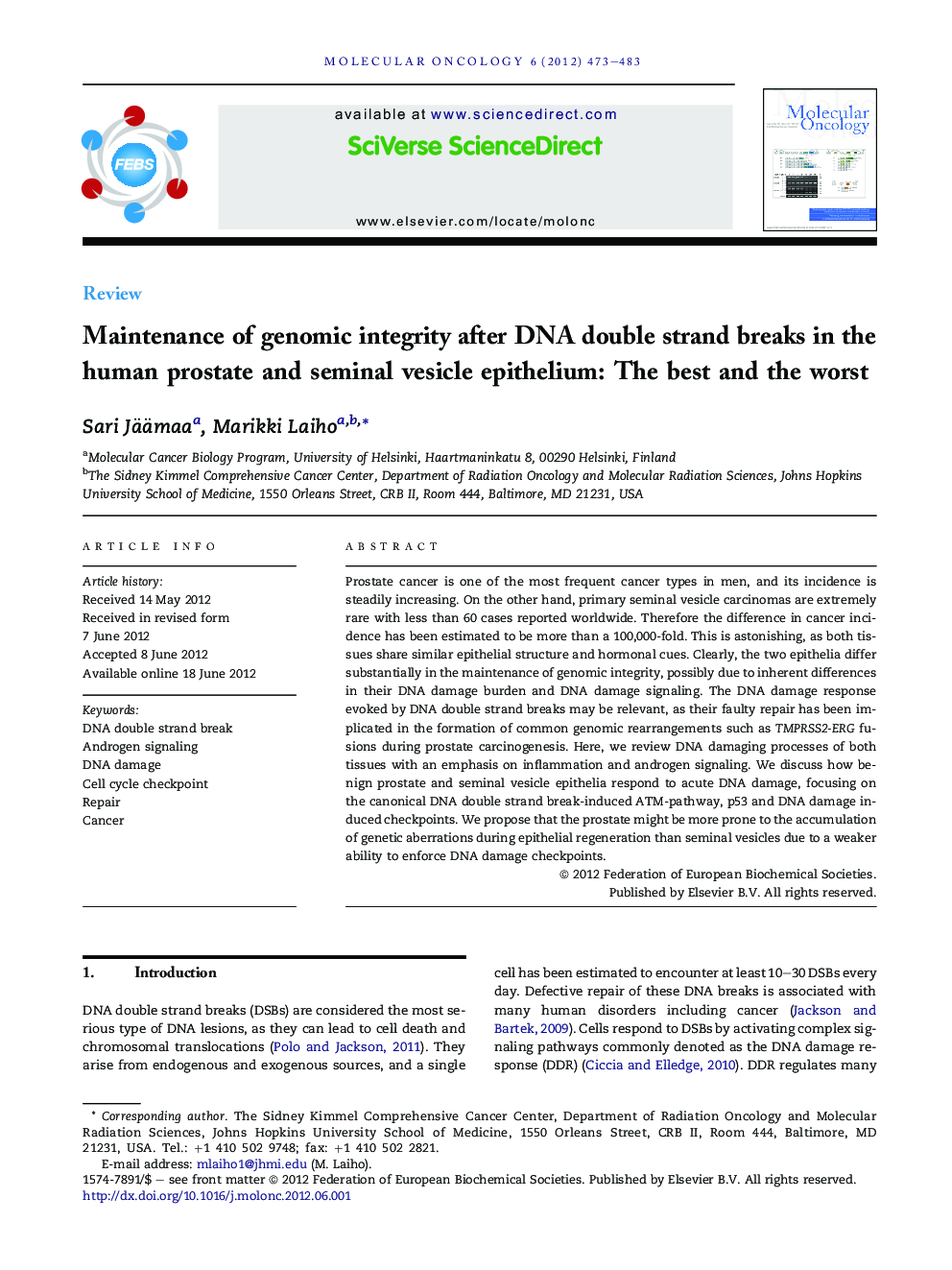| Article ID | Journal | Published Year | Pages | File Type |
|---|---|---|---|---|
| 2145829 | Molecular Oncology | 2012 | 11 Pages |
Prostate cancer is one of the most frequent cancer types in men, and its incidence is steadily increasing. On the other hand, primary seminal vesicle carcinomas are extremely rare with less than 60 cases reported worldwide. Therefore the difference in cancer incidence has been estimated to be more than a 100,000-fold. This is astonishing, as both tissues share similar epithelial structure and hormonal cues. Clearly, the two epithelia differ substantially in the maintenance of genomic integrity, possibly due to inherent differences in their DNA damage burden and DNA damage signaling. The DNA damage response evoked by DNA double strand breaks may be relevant, as their faulty repair has been implicated in the formation of common genomic rearrangements such as TMPRSS2-ERG fusions during prostate carcinogenesis. Here, we review DNA damaging processes of both tissues with an emphasis on inflammation and androgen signaling. We discuss how benign prostate and seminal vesicle epithelia respond to acute DNA damage, focusing on the canonical DNA double strand break-induced ATM-pathway, p53 and DNA damage induced checkpoints. We propose that the prostate might be more prone to the accumulation of genetic aberrations during epithelial regeneration than seminal vesicles due to a weaker ability to enforce DNA damage checkpoints.
► Male reproductive organs prostate and seminal vesicle vastly differ in their cancer incidence. ► These tissues are exposed to similar cancer predisposition factors. ► Damage checkpoints are enforced differentially in prostate and seminal vesicle cells. ► Replicative cycles may drive prostate tumorigenesis in the absence of adequate repair.
